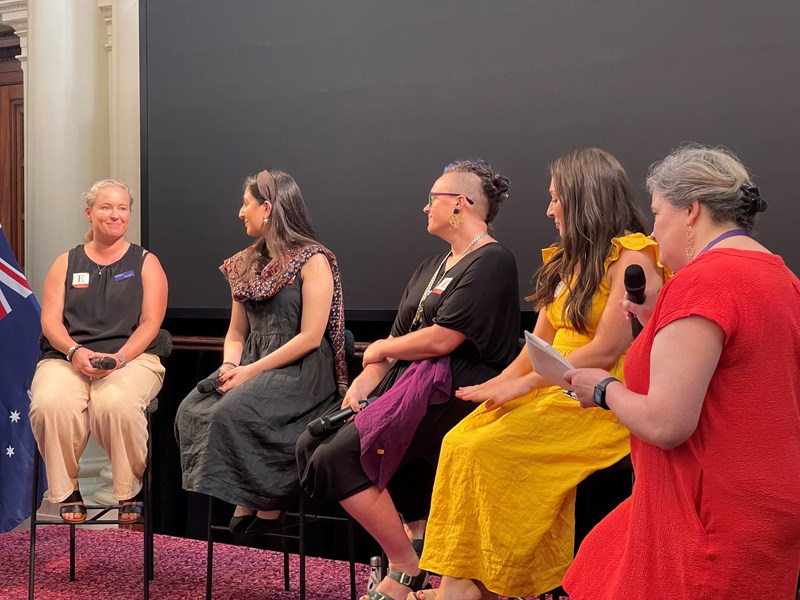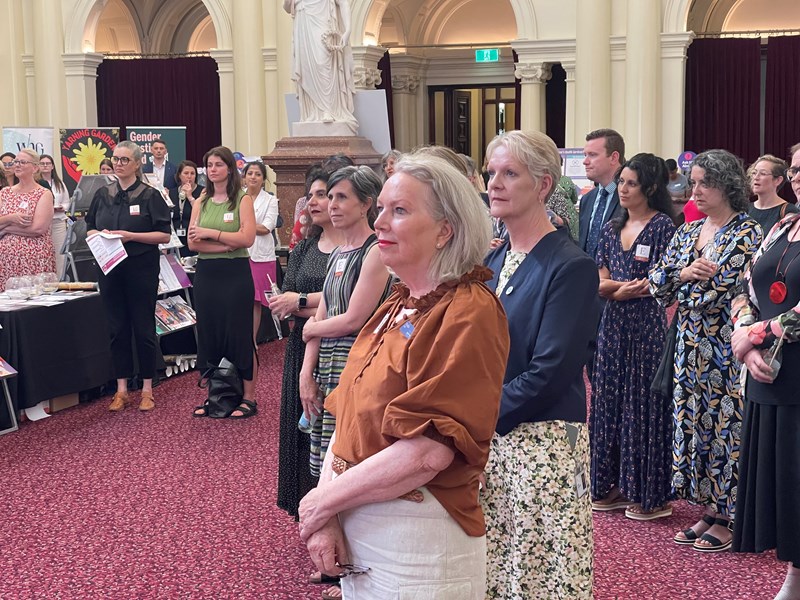'Seeing women' the key to improving health outcomes
22 February 2024

Preventing ill health in Victorian women not only leads to a healthier society but also means less demand on the state’s secondary and tertiary prevention services.
That’s the message delivered by a showcase of women’s health services held at Parliament House this week.
The Women’s Health Services Network brought together representatives of 12 state government-funded services to showcase their work to MPs and visitors through a series of displays in Queen’s Hall.
‘To be perfectly honest, we know that 51 per cent of the population is often unseen,’ says Tricia Currie, Chair of the Women's Health Services Network and CEO of Women's Health Loddon Mallee.
'We’re here to showcase what we do so that women can be seen for the work that they do every day in so many different environments and settings. Work that actually makes a difference for rural women, for migrant and refugee women, for all those women who are often unseen,’ she says.
Across Victoria the women's health services work in gendered health promotion, primary prevention and gender equity. Crucially, Tricia Currie says, the services have deep connections to their local communities.

‘We know that we get better outcomes for women's health when we work in partnership with place-based organisations,’ she says.
‘So consequently our partnerships are with local governments, sporting clubs, hospitals and a whole range of organisations that actually have an interest in promoting good health through the social determinants of health, the things that impact on women's health like economic empowerment and education.’
The network has five priorities in promoting women’s health: preventing violence against women; gender equality; sexual and reproductive health; promoting women's good mental health; and women in a changing society (climate change, emergency and disaster situations).
‘All of our work centres women's voices, so our work always links into the lived experience of women in terms of the issues that are important to them,’ she says.
Tricia Currie says investments in women’s health services are improving outcomes for Victorian women.
‘The fertility clinics, the independent endometriosis clinics, the sexual and reproductive health hubs, are making a difference, but there is a long way to go.
‘There are still more opportunities to actually start to really understand that there are particular things in regards to women's health that are not well supported in the general understanding and health literacy that we have. So understanding women's bodies is crucial,’ she says.